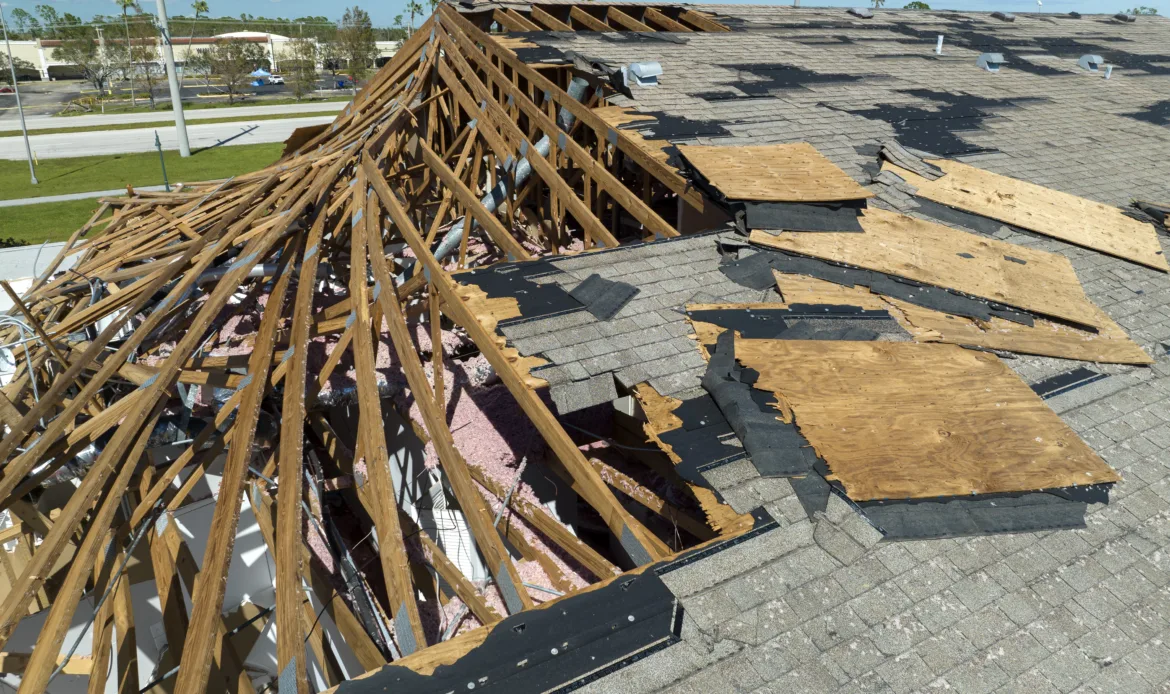When a storm hits, the last thing you want to worry about is your roof. Unfortunately, roofs take a beating during storms. Whether it’s heavy rain, strong winds, or hail, damage to your roof can happen quickly. The good news? There are things you can do right away to reduce further damage and get your roof repaired fast. Let’s dive into what you need to know about handling roof repairs after a storm and how you can keep your home protected.
Immediate Action Steps: What to Do Right After a Storm
The first step after a storm is to stay safe. As tempting as it may be to rush outside and inspect your roof, make sure the storm has fully passed. You don’t want to risk getting hurt by falling debris or lightning. Once things have calmed down, grab a pair of binoculars and do a visual inspection from the ground. Look for obvious signs of roof damage like missing shingles, bent flashing, or broken tiles. If your roof is metal, check for dents caused by hail.
If you spot anything alarming, don’t panic. These issues can usually be fixed quickly by a professional. Make sure to document the damage with photos or videos. This will come in handy later when filing an insurance claim. Even if you don’t see any damage right away, it’s a good idea to have a professional come out and inspect your roof. Some storm damage isn’t visible to the untrained eye and could lead to more expensive problems if left unchecked.
Insurance Claims: How to Document Damage for Smoother Claims
When it comes to storm damage, your roof repair costs may be covered by insurance. To make the process as smooth as possible, it’s essential to document everything thoroughly. Those photos and videos you take after a storm aren’t just for your own peace of mind—they’re crucial for supporting your insurance claim.
Once you’ve documented the damage, contact your insurance provider to begin the claims process. Be ready to share details about the storm, the type of damage, and any prior repairs you’ve had on your roof. Your insurance company may send an adjuster to inspect the damage or ask for estimates from a roofing contractor. Be sure to save all receipts and paperwork, especially if you’ve done emergency repairs, such as tarping your roof to prevent leaks.
For a smooth claims process, being organized and thorough is key. Here’s a quick checklist of steps to help ensure your roof repair is covered:
- Take photos and videos: Document all visible damage immediately after the storm.
- Contact your insurance provider: Report the damage and provide storm details.
- Save all paperwork: Keep receipts and documents for any temporary repairs made.
- Track communications: Maintain a record of all conversations with your insurance company and contractors.
- Get estimates: If needed, get repair estimates from trusted roofing contractors.
Staying organized and detailed will help ensure there are no surprises when it comes to covering the cost of your roof repair.
Common Storm Damage: Identifying Wind, Hail, and Water Damage
Not all storm damage is the same, and the type of damage your roof experiences depends on the kind of storm that rolled through. Wind, hail, and water all have different effects on your roof, so it’s important to know what to look for after each type of storm.
Wind Damage
Wind is one of the biggest culprits when it comes to roof damage. High winds can lift shingles, allowing water to seep underneath, and in some cases, wind can even tear shingles right off your roof.
- Look for missing shingles: High winds can rip them off completely.
- Check for curled shingles: Wind can loosen them, leading to water seeping underneath.
Hail Damage
Hail is another major cause of roof damage. It can leave dents in metal roofs or crack asphalt shingles.
- Inspect for round dents: Small, round dents in metal roofing are signs of hail damage.
- Look for granule loss: If shingles are missing granules, hail may have caused damage.
While hail damage might not look severe at first, it can shorten your roof’s lifespan and lead to bigger problems if left unaddressed.
Water Damage
Water damage is the sneaky one. Even if there’s no visible sign of leaks, water can find its way under shingles, causing rot or mold over time.
- Inspect your attic: Look for moisture, wet insulation, or water stains.
- Check for hidden leaks: Even small amounts of water can cause long-term damage if not caught early.
Catching water damage early can save you from having to do a major roof repair later on. Each type of storm leaves its mark, so knowing what to check for can make all the difference in keeping your roof in top shape!




